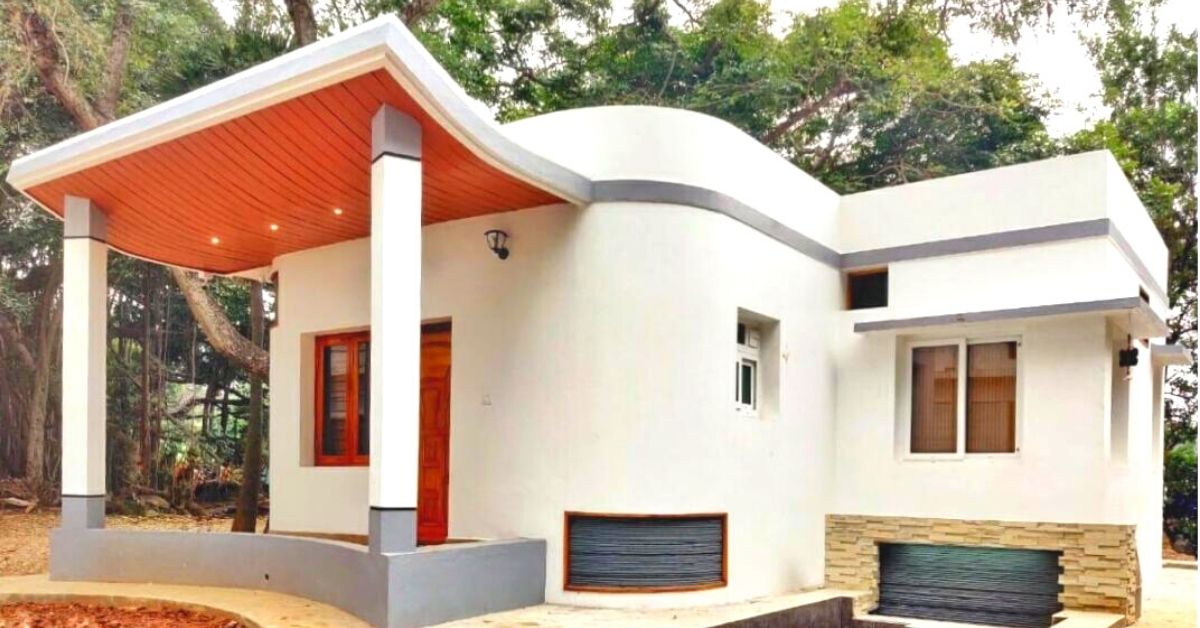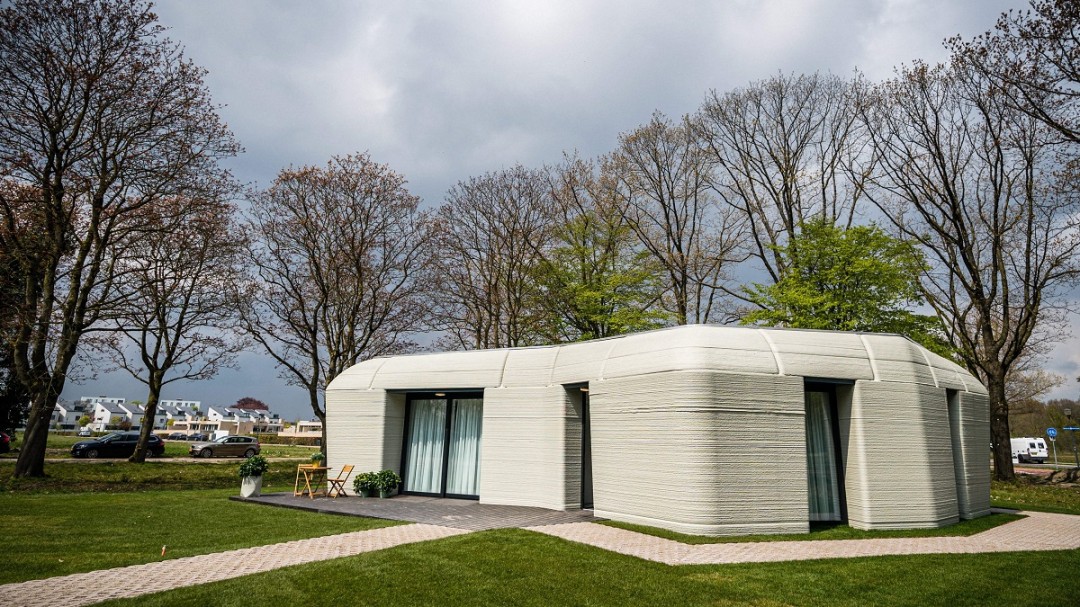Table Of Content

If you prefer a home with more bells and whistles as your primary residence, you may still want to consider a 3D-printed home as a second home. Dustin Fox, Realtor and owner of Fox Homes, said you should expect to pay $15,000 for a one-bedroom home — and the prices go up from there.
Cons of 3D-Printed Houses
Comprising 3D-printed floors, walls and roofs of wood fibers and bio-resins, the home is fully recyclable and highly insulated with 100% wood insulation and customizable R-values. Mighty Buildings completes this 159-square meter 3D-printed net-zero home in southern California as part of a 40-unit community in Desert Hot Springs that explores environmental and economic development strategies. Since 3D printing allows for high design flexibility, it’s easy to achieve a balance between form, function and aesthetics. It’s devoid of all sharp angles, consisting of only curves, and is printed with an external and internal layer that’s filled with insulation in between. The house is also fitted with eco-tech, from a recirculating shower to a green roof. Construction began on March 19th, 2020, and took around three weeks to print, but Kamp C believes future homes can be completed in just two days.
CONCR3DE Armadillo stone 3D printer

Apis Cor, a 3D construction company, is based in San Francisco and claims to be able to 3D print a house in under 24 hours. Their Apis Cor printer is similar to a robotic arm and has won first place in NASA’s Phase 3 3D-Printed Habitat Competition. The Crane WASP is the evolution of WASP’s previous construction printer, the BigDeltaWASP 12MT.
printing system
“The price point will come down over time — if you reach adoption,” Woodman said. This kind of construction needs scale to achieve cost savings — think of the 100-home development in Austin. The Michigan Housing Development Authority, which funded the project with a mix of grants and loans, set the final price. Completed wall sections are shipped to the new home site, where they are connected.
Materials Used
The paste squeezes through a nozzle, bringing the digital rendering into physical form. Before the next layer is applied, the mixture is solidified by a concrete dryer. Nowadays, industrial-sized 3D printers have made it possible to print an entire house in less than 24 hours.
Floorplan For 3D Printed House With Two Bedrooms
Could 3D-printed homes help solve the affordable-housing crisis? - Marketplace
Could 3D-printed homes help solve the affordable-housing crisis?.
Posted: Mon, 04 Dec 2023 08:00:00 GMT [source]
In terms of costs, several articles consulted speak of a 50% cost saving for the "house". It would seem that the savings are only in the wall structure, since only the walls are printed (and that it would be more like 10-20%, due to the cost of labor, which is less on a printed structure). The first 3D house, built by the international organization Habitat for Humanity in Virginia, while it took only 28 hours to print the concrete walls, the construction site to complete the house took as long as a traditional house.
How to Buy or Build a 3D Printed House
Its sustainable design uses low-energy floor and ceiling heating, sourced from solar panels and a heat pump. Companies are starting to use improved materials, faster concrete 3D printers, and building more innovative houses that fully utilize the benefits of 3D printing technology. And they offer a great solution to affordable and sustainable housing in developing countries. One of the most significant technological advancements in 3D printed houses is the use of robotics and automation.
Michigan's 1st 3D printed home built in Detroit by Citizen Robotics - Detroit Free Press
Michigan's 1st 3D printed home built in Detroit by Citizen Robotics.
Posted: Mon, 02 Oct 2023 07:00:00 GMT [source]
These four Austin, Texas properties by construction 3D-printing company ICON feature open-floor plans, minimal architectural aesthetics and private yards. Varying in size, these residences feature two to four bedrooms and range from 1,000 to 2,000-square-foot homes. Each ground floor level is built with a proprietary cement-based material, dubbed “Lavacrete,” to last longer than traditional construction materials, according to the company’s website. The second story incorporates old-school methods, and is constructed out of black metal cladding and rich-colored timber. They share a color palette of green, white and terracotta and have all been sold.
Even 3D printed houses have a rougher exterior, post-processing is an option just as it is for regular 3D printed objects. 3D printed houses tend to be smaller due to 3D printer build volume limits, but this is not always the case. These successfully 3D-printed houses certainly point the industry in the right direction and even though there’s still a lot of potentials to be explored in other markets – it’s clear that 3D construction printing is here to stay. 3D printing offers the chance to build houses faster, more accurately and cheaper than ever before. We will be showcasing some interesting 3D printed house projects that already exist, the advantages and disadvantages of 3D printed houses, and mentioning some 3D house printer companies who are working hard to commercialize the tech. When it comes to the supplies needed to build a 3D home, some of the materials and tools will be exactly the same tools you’d need to build a house with traditional methods.
The construction process minimizes waste and provides unparalleled design freedom by 3D-printing the entire wall system, both interior and exterior walls. Like New Story’s plans for the developing world, this interesting prototype may form the basis for building houses in poorer countries. In more deprived areas where the imminent problem is shelter rather than wiring and pipes inside houses, these cheap 3D printed houses offer an effective solution to a real crisis.
It is exciting to see the construction 3D printing industry taking strides in its progress. Following a digital blueprint, a 3D printer will dispense a paste-like mixture. This will consist of choice ingredients — often a cement blend — but can range from sand and special polymers to bio-resins, like soil, clay or wood flour, which is a fine sawdust mixed with a corn-based binder.
The entire project took around 21 days, and the overall cost was about ₹ 5-5.5 lakhs ($6,000 – $7000). According to Tvasta, this price is 20% of a traditionally built house in the same area. This project goes on to show the capabilities of Tvasta’s 3D printed homes and will be helpful as a proof-of-concept for building affordable housing in developing countries. 3D printed houses are made by using a machine to lay down successive layers of material until the entire structure is complete. 3D printing technology has been around for a few decades now, but it has only recently become advanced enough to be used for printing houses.
The community of 3D-printed homes seamlessly combines the timeless charm of contemporary Texas ranch style with elevated architectural elements and energy-efficient designs. These innovative homes showcase the advantages of resiliency and sustainability, achieved through the cutting-edge possibilities of additive construction. Meticulously designed by Logan Architecture, developed by 3Strands and built from 3D-printed concrete by construction technology company ICON – East 17th Street Residences has been completed in the heart of the East Austin community.
In general, it is estimated that a 3D printed house costs 30% to 55% less than a traditionally-built house. The StroyBot, also known as the Rudenko 3D construction printer (made by Andrey Rudenko), is an all-in-one mobile construction printing system delivered as a kit to be assembled by the user. On average, it is able to print a 100-square-meter house in 48 hours (walls only). Utilizing ICON‘s Vulcan robotic construction systems, sophisticated software, and advanced materials, these homes are swiftly and efficiently delivered at scale.

No comments:
Post a Comment